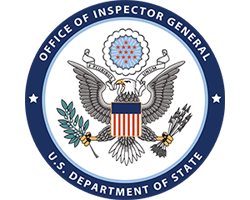01/29/2016
Department of State
Evaluation of the Department of State's FOIA Processes for Requests Involving the Office of the Secretary
Other
Agency-Wide
View Report
View Report Highlights
Submitting OIG
Department of State OIG
Number of Recommendations
4
01/28/2016
Department of Veterans Affairs
Review of Community Based Outpatient Clinics and Other Outpatient Clinics of VA Western New York Healthcare System, Buffalo, New York
Review
Olean , NY United States
Batavia , NY United States
Buffalo , NY United States
Dunkirk , NY United States
Lockport , NY United States
Jamestown , NY United States
Lackawanna , NY United States
Niagara Falls , NY United States
View Report
View Report Highlights
Submitting OIG
Department of Veterans Affairs OIG
Number of Recommendations
13
Report Number
15-05155-89
01/28/2016
Department of Veterans Affairs
Combined Assessment Program Review of VA Butler Healthcare, Butler, Pennsylvania
Review
View Report
View Report Highlights
Submitting OIG
Department of Veterans Affairs OIG
Number of Recommendations
7
Report Number
15-04706-104
01/28/2016
Department of Veterans Affairs
Combined Assessment Program Review of the VA Western New York Healthcare System, Buffalo, New York
Review
Batavia , NY United States
Buffalo , NY United States
View Report
View Report Highlights
Submitting OIG
Department of Veterans Affairs OIG
Number of Recommendations
12
Report Number
15-04698-99
01/28/2016
Department of Veterans Affairs
Review of Community Based Outpatient Clinics and Other Outpatient Clinics of VA Texas Valley Coastal Bend Health Care System, Harlingen, Texas
Review
Laredo , TX United States
McAllen , TX United States
Harlingen , TX United States
Corpus Christi , TX United States
View Report
View Report Highlights
Submitting OIG
Department of Veterans Affairs OIG
Number of Recommendations
2
Report Number
15-05149-88
01/28/2016
U.S. Postal Service
Government Relations Responsiveness to Congressional Requests
Review
Agency-Wide
View Report
View Report Highlights
Submitting OIG
U.S. Postal Service OIG
Number of Recommendations
3
Report Number
HR-MA-16-002
01/28/2016
U.S. Postal Service
International Inbound Mail Verification
Audit
Agency-Wide
View Report
View Report Highlights
Submitting OIG
U.S. Postal Service OIG
Number of Recommendations
1
Report Number
MR-MT-16-001
01/28/2016
Department of State
Management Assistance Report: Annual Purchase Card Program Reviews
Other
Agency-Wide
View Report
View Report Highlights
Submitting OIG
Department of State OIG
Number of Recommendations
2
Report Number
ISP-I-16-04
01/28/2016
Social Security Administration
Fiscal Year 2015 Risk Assessment of the Social Security Administration’s Charge Card Programs
Audit
Agency-Wide
View Report
View Report Highlights
Submitting OIG
Social Security Administration OIG
Report Number
A-13-16-50061
01/28/2016
Social Security Administration
Retirement Claim Denials Because of Lack of Insured Status
Audit
Agency-Wide
View Report
View Report Highlights
Submitting OIG
Social Security Administration OIG
Number of Recommendations
3
Report Number
A-09-14-34107
